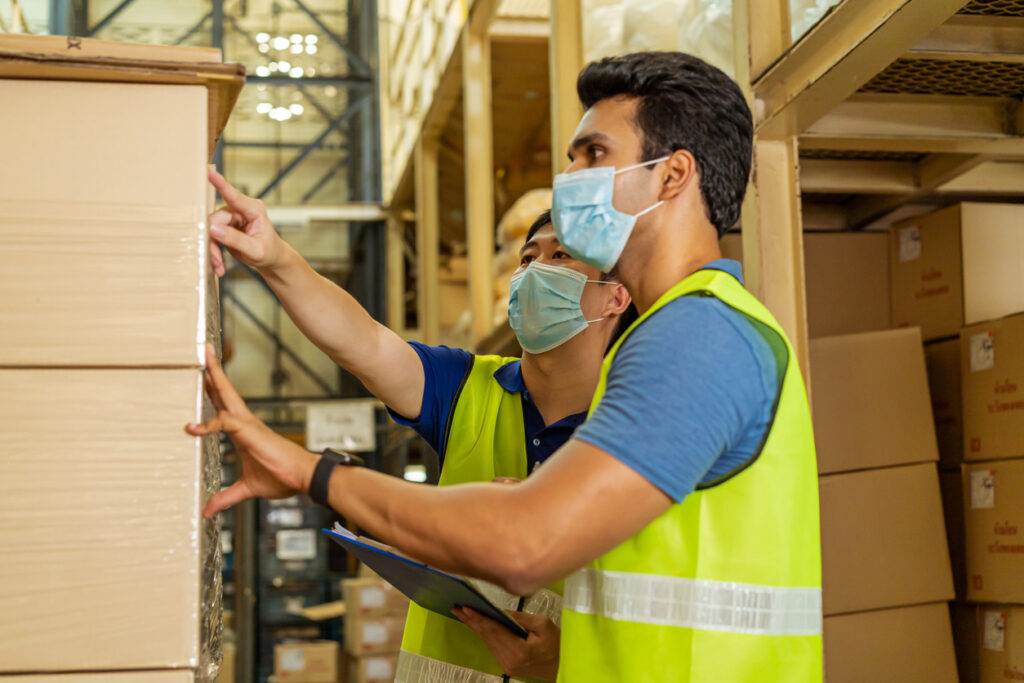The global pandemic changed the way that people purchased goods and, in the process, altered how those goods were produced and transported. Prior to the pandemic, a global supply chain was commonplace, and goods moved freely from manufacturer to business to consumer, crossing continents without pause.
Then the pandemic swept across the world and businesses started shutting down.
Factories closed and businesses operated on skeleton crews. Production halted for some and completely shut down for many. There are a number of businesses that will never come back.
The answer? Adapt. Adjust. As businesses work to re-engineer their supply chain and rebound from more than a year of extreme difficulty, freight forwarders are scrambling to catch up and stay ahead.

Will the changes be forever?
Now that we’ve had a year to work through the shutdowns and production issues, things are starting to pick back up. But will it go back to the way it was? Can we return to a pre-pandemic supply chain?
Not likely. There are parts of the supply chain as well as the businesses within them, that are altered forever. This leaves logistics and freight forwarding forever altered.
It won’t go back. It can’t.
And it all affects freight forwarding. There is no part of the supply chain that freight forwarding does not touch in some way. So now these companies are left trying to maintain flexibility and make the necessary adjustments to keep the flow of goods open and efficient.
What changed?
There are several areas that sustained significant changes and businesses need to analyze those changes to see how they apply to their own organization.
Consumer demand is one of the main drivers for a supply chain. A company can produce whatever it wants, but it’s the consumer who decides if the product is valuable and desirable. The pandemic changed the way that consumers chose to shop and receive their merchandise. When consumers went remote for work and school, so did their shopping. Direct to consumer became a major component of the supply chain and it’s not going anywhere.
The pandemic highlighted for many people a need to get away from the close quarters of an urban setting. Population shifts are occurring across the country and the world as people move their families from densely populated cities and metropolitan areas to less populated, more isolated rural settings.
The sharing of information from facility to facility and along the supply chain became a major issue. There was no interconnectivity and with many businesses going remote, there was no central area where data and available information could be shared. Businesses have been adopting technology that connect all businesses along the supply chain and freight forwarders are getting looped in too. This makes the process move much smoother and it is easier for the freight forwarder to do their job regardless of whether any of the businesses in the chain are remote or not.
One of the biggest lessons of the pandemic was how ill prepared many businesses were for a worldwide event that would cripple organizations. Business continuity was barely a blip on the radar then. But it is front and center now. The future supply chain is flexible, quick to adapt to changes, and always looking forward.
How has the pandemic altered the supply chain?
As businesses moved into emergency mode and business continuity became the focus, the supply chain took a direct hit. Many businesses learned the hard way that having just one source for raw material or keeping a single manufacturing facility is a dangerous position.
As various companies began to crack under the pressure of the pandemic, shuttering their doors or scaling down production, those businesses that relied on them were affected in a far-reaching domino effect. Business continuity took a direct hit.
As a result, a number of organizations have taken steps to identify multiple sources for their materials as well as manufacturing facilities. There also seems to be a trend toward utilizing North American facilities and bringing more, if not all, production back within the US borders.
This requires flexibility as the freight forwarder must be agile, able to keep moving from one facility to the next.
What has the situation at the ports changed the supply chain?
As freight forwarders move cargo along, cargo shipped from overseas will eventually find its way to various port. In the midst of the pandemic, vessels would often arrive at a post, only to find it closed or quarantined or non-essential, so cargo was either not there or being held. This caused tremendous losses for all involved and often led to legal disputes.
Moving forward, freight forwarders have had to try to stay ahead of closures so that they can divert vessels from areas that are closed or do not have cargo. In this effort to save money and keep the product moving, they must also identify ports that are open and quickly route cargo to those areas.
But with so many companies financially decimated as a result of this, some vessels and ports will remain closed for at least the foreseeable future – possibly forever.
A logistics company that has weathered the global pandemic can stand up against just about anything. LOA International offers services in freight forwarding, warehousing, and logistics consultation. We learned our lessons from the pandemic, and we will apply that knowledge to ensuring that your products are moved as efficiently and effectively as possible. Contact us today to find out how we can help you.
